Following the advent of the automobile in the 1890s, motoring grew fashionable among wealthy people. As early cars had no roofs or doors and were driven mostly on dirt roads, motorists needed clothes that could protect them from wind, cold, and dust.
Consequently, motoring not only demanded new kinds of protective outerwear but also created another social occasion for sartorial display.
Novel lines of purpose-designed clothing and accessories rapidly evolved, from car rugs and overcoats to boots and gauntlets.
Some were more practical than alluring, but from the outset motoring expressed affluence and privilege, linking driving with glamor and style – an image used to promote diverse products from tires to oil and still promoted in car advertisements today.
Fur coats, already luxury status symbols, were a favorite, and motoring also encouraged the adoption of other, previously-unfashionable animal skins.
A new range of men’s fur coats, shaggy and consciously primitive-looking, included goat, bear, wolf, jackal, and raccoon, these bulky, rugged garments remaining popular for driving open-topped sports cars even when closed automobiles became more commonplace during the 1920s.
Ladies’ fur motoring coats were designed for comfort and style: for example, carefully-matched gray squirrel skin coats might have deep contrasting collars and cuffs of fashionable opossum or fluffy white fox fur.

Motor car enthusiasts in fancy dress at the Liverpool Motor Show. 1907.
Summer motorists often wore a loose-fitting lightweight dust or duster coat of unlined canvas, linen, flannel, or alpaca, usually colored off-white, gray, or beige, and sleeves featuring elasticated or strapped inner cuffs.
Protective headgear ranged from peaked driving caps and conventional cloth caps to deerstalkers and other hats with ear flaps.
Some women adopted peaked caps, although a hat and veil became more usual, to screen hair and face from dust and oil smuts and protect the complexion.
To shield the eyes, male drivers generally used goggles, common types including convex eyeglasses with nickel or aluminum rims and an elastic strap worn around the head or a one-piece mica mask or eye shield.
Dedicated motoring goggles set into a close-fitting leather mask afforded the best protection and in winter these also shielded the eyes from cold air, which, along with other irritants, could cause serious eye infections.
Although most women preferred a veil, some used goggles, especially serious female motorists who drove at speed.
Other accessories for the early motorist included warm fur car rugs and waterproof tarpaulin-like ‘aprons’ for winter; also goats’ hair or fur-lined leather footmuffs and foot protectors, and some footmuffs made all-in-one with fur lap robes that wrapped around the body.


Rolls-Royce co-founder Charles Stewart Rolls, in costume as a police officer, writes a ticket for a man dressed in motoring clothes. 1900.



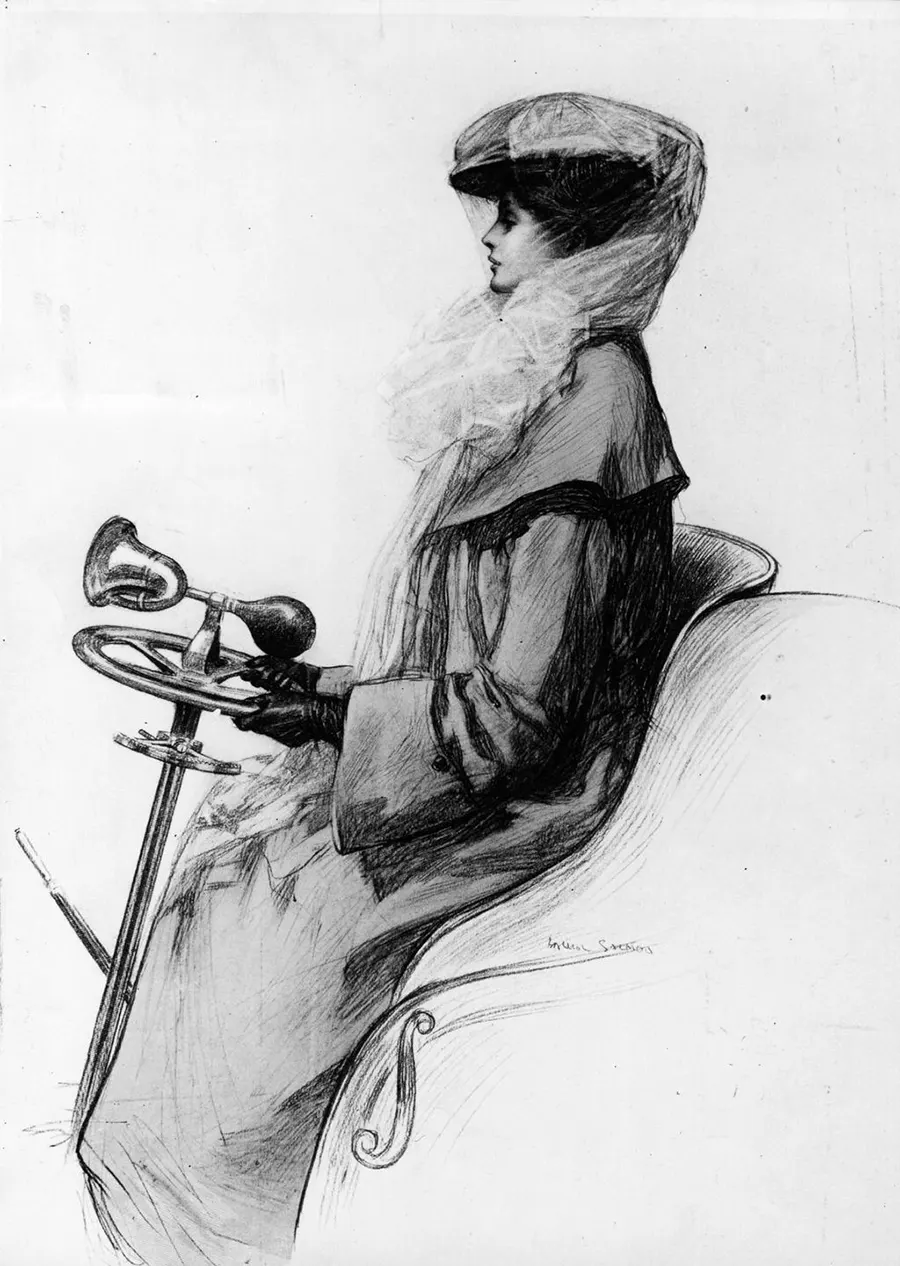


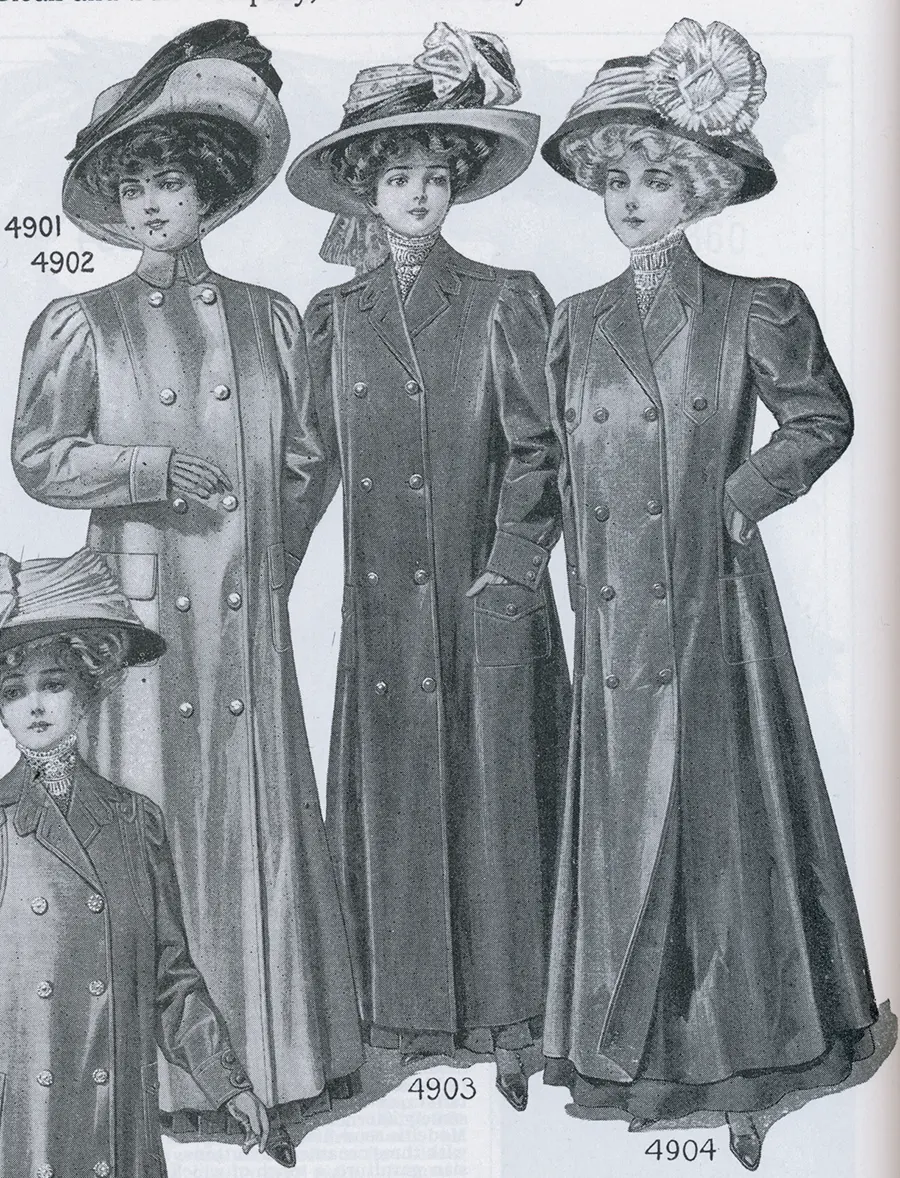

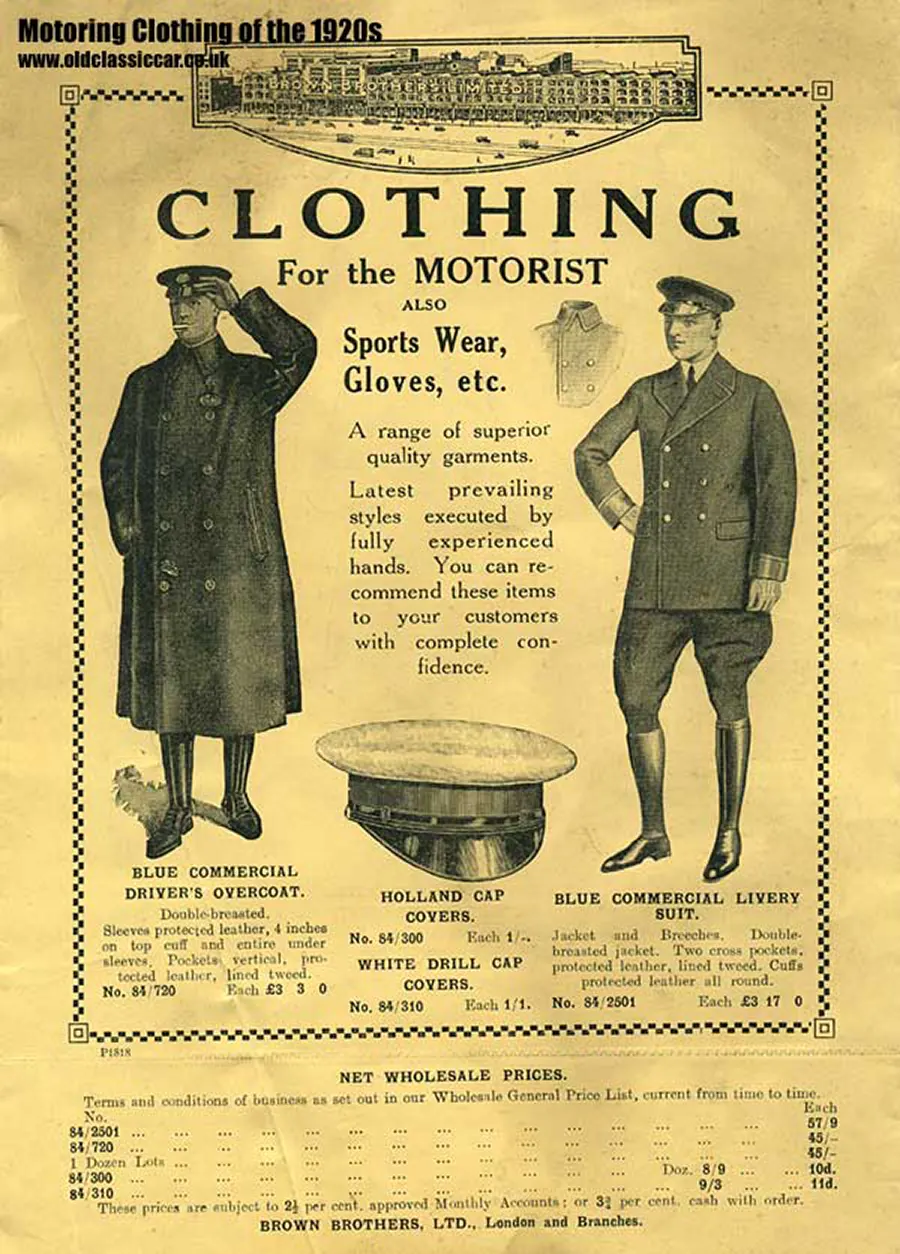
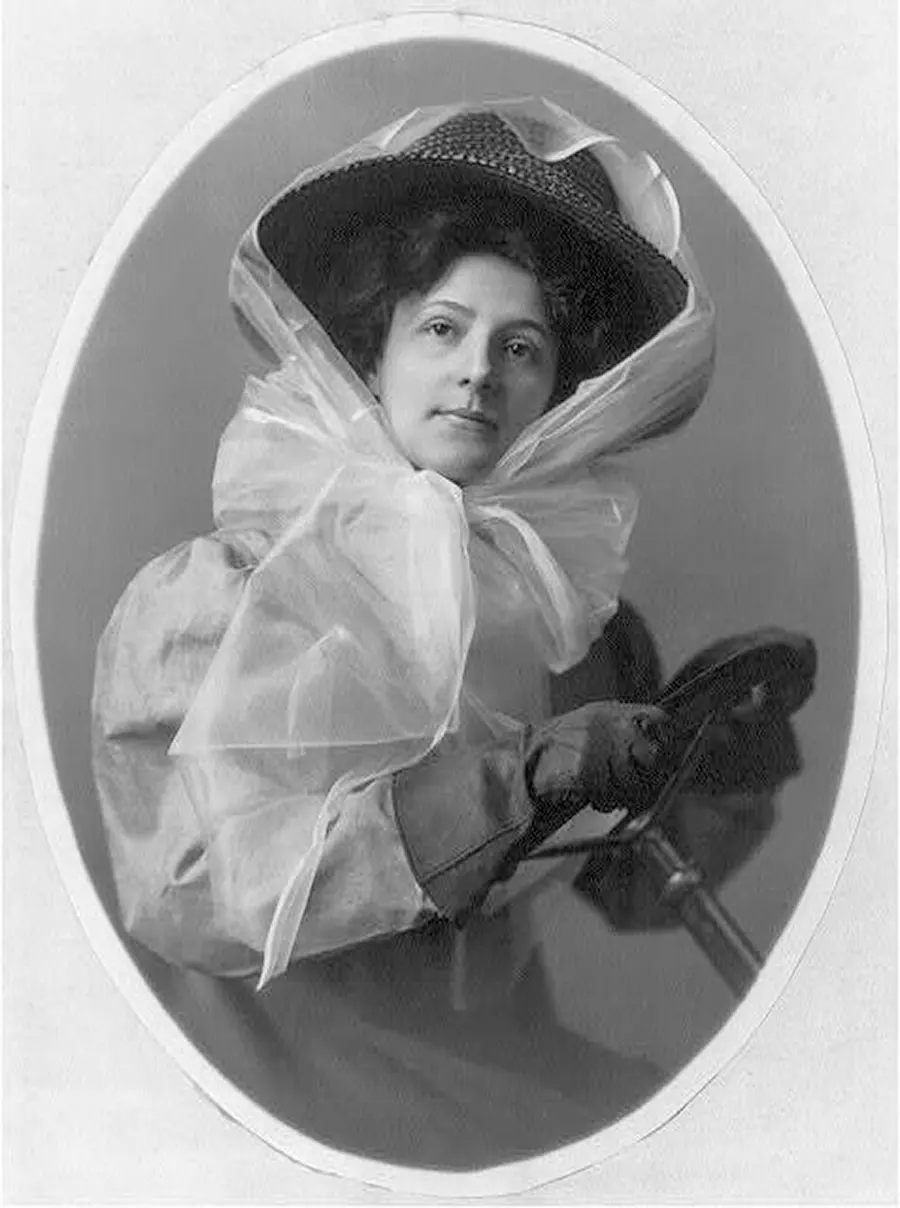


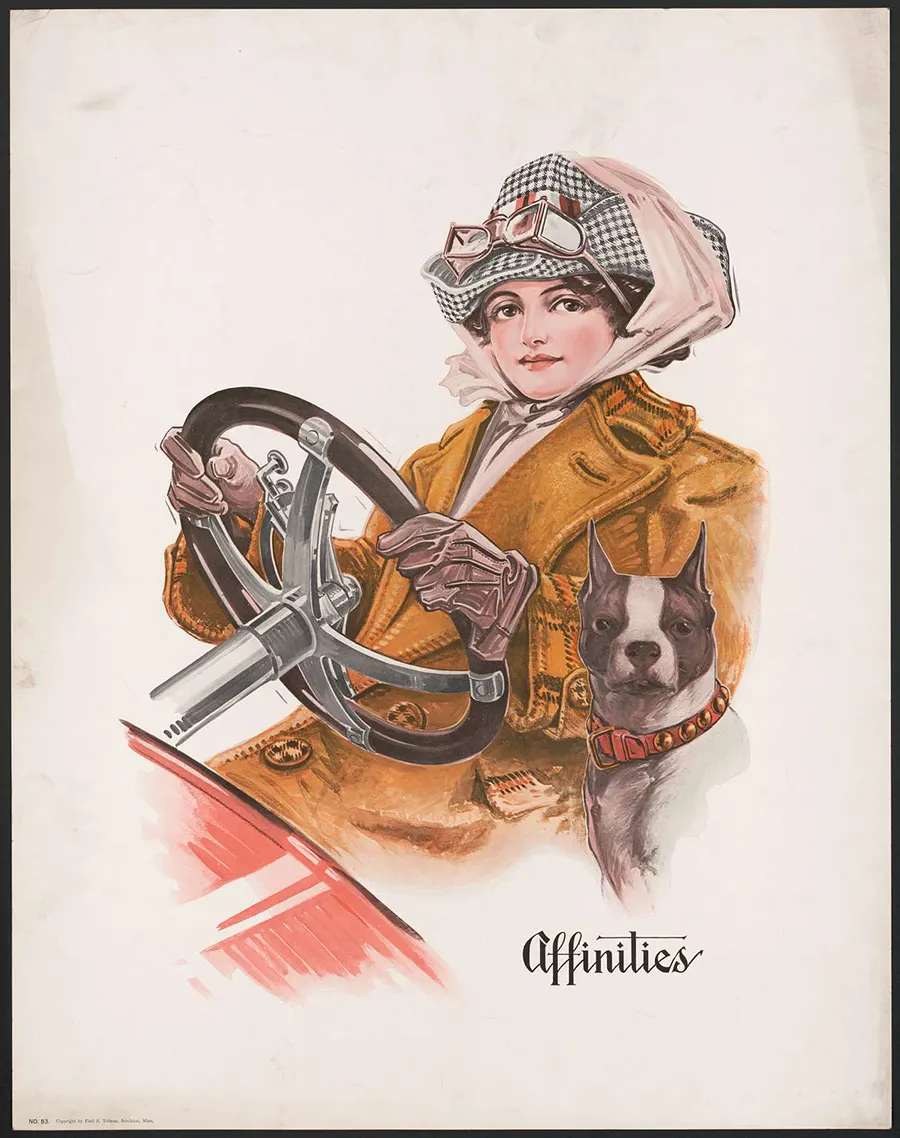
(Photo credit: Mashable / Flickr / Pinterest / Behind the Wheel by Jayne Shrimpton from The Post Magazine UK).



